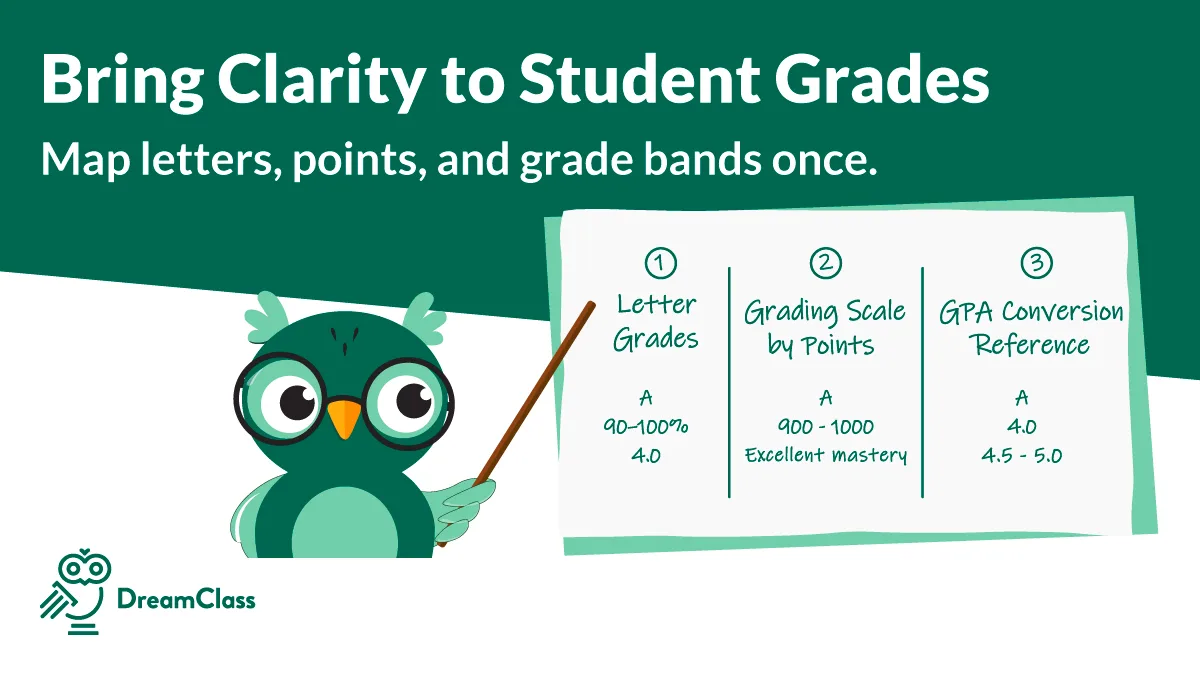
Are you looking for a parent gradebook for your school to enhance parental engagement? We’ve got you covered. Our Student Information System, DreamClass can function, among other things, as a parent gradebook.
By adding students’ grades to your parent gradebooks you save administrators the extra work needed to keep parents updated. This process we’ll explain in detail below, and then we’ll show exactly what information is available to parents and guardians when they login to their portals.
But, before that, let’s discuss why it’s important to get parents involved.
The importance of keeping parents engaged with a parent gradebook
Parents have always been interested in staying up to date with their children’s progress. Τhat need has become more immediate during the pandemic. This tough year had parents much more worried regarding their children’s progress; despite the fact that, in many cases, students were virtually attending their classes from home. That is, next door from their parents’ home office.
Making a parent gradebook available to parents helps them assume an active role in their children’s school life. And that, not only helps improve students’ performance, it also brings extra value to your school’s reputation. According to research published in the Journal of Literacy and Technology “Parental involvement can have a tremendous effect on the academic achievement of students.” Thus, with the help of a student information system that, among other things, functions as a parent gradebook, schools can add value to both their school management processes and their prestige; and increase their ranking among competitors. All in all, it’s a win-win situation for both parties; parents and school.
Let’s have a look at how you can achieve all of the above, with DreamClass.
Using DreamClass as a parent gradebook
DreamClass comes with a long list of features that helps schools improve a long list of administrative processes. In particular, it functions, among other things, as attendance tracking software, admissions software, a student information system, gradebook software and a parents’ portal. These last two functionality aspects make for a parent gradebook, too. In short, when administrators or teachers add grades in the respective gradebooks, parents are able to login to their accounts and have a look at their children’s marks. Read on, to find out more.
Preparing parent gradebooks
Grades, in DreamClass, are organized in gradebooks. Teachers and administrators create one for each subject in the school program; exactly the way they’d use paper gradebooks. The difference, here, is that working with online gradebooks, you get automation and flexibility to the whole process. And that helps make the grading process a lot easier for teachers. More specifically, teachers are able to create columns of grades within their online gradebooks and have the average values automatically calculated. They’re also able to reflect more complicated grade structures, creating groups of grades with simple and weighted averages. All in all, the gradebook options offered do the trick and make the calculation of the finals easy as ABC. You may find more information on how our recently upgraded gradebooks work, in our latest release notes.
Giving parents access to student grades with the parent gradebook
Before parents and/or guardians get access to the parent gradebook, administrators need to represent the respective family connections in the system. And they do so, by creating the respective guardian entity, choosing one of the available options that include the roles of father, mother, stepfather, stepmother, grandfather, grandmother, uncle, aunt or any other family member that is responsible for the student. Representing such relationships results in groups of families; especially in case more than one guardian is assigned to a student. And each member of the guardians’ group of a family can be granted access to the information related to their children’s studies. All that is needed is the email of the guardian that gets notified, to login to their account. There, in the guardian portal, parents are able to view grades.
What’s available in a parent gradebook
Parents and guardians are able to view their children’s grades the moment they’re entered in the system. All they have to do is sign in to their portal, where they’ll get access to personalized information, related to their children’s studies. More specifically, they are able to view the gradebooks of all the subjects their children are enrolled in. Some extra information offered there is the class’s averages, so that guardians get a grasp of their children’s progress, in relation to other students.
DreamClass’ Guardian Portal
The parent gradebook is part of the parent portal in DreamClass. And that means that, apart from students’ grades, parents and guardians are also able get access to the following:
- View student attendance data along with comments added by teachers. This way they’re able to get a better understanding of their children’s overall performance.
- Contact teachers, simply by sending an email directly from their account, in case they need to ask a question related to their children’s progress.
- Have tuition fee information at their fingertips. In short, they can view pending invoices and proceed with tuition fee payments, directly from their account, using their preferred payment method (Google Pay, Stripe, PayPal, etc.)
- Attendance data, gradebooks and tuition fees from past school periods are also available to parents, in case they need to go back and compare.
- School contact information (phone numbers, fax, postal address etc.) is also within arm’s reach, helping guardians and parents contact administrators, headmasters, teachers or any other role they may need.
Get parents and guardians involved, with the parent gradebook in DreamClass
If you’re looking for new ways to improve parental involvement, try our Student Information System for free; it functions as a parent gradebook, too. Such a decision will be beneficial, not only to your students and parents, but also to your administrators and teachers; and to upholding and improving your school reputation.





